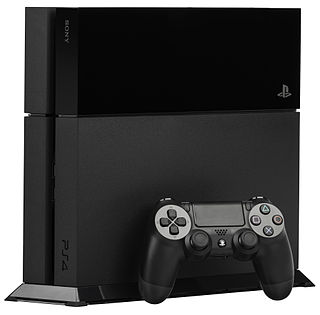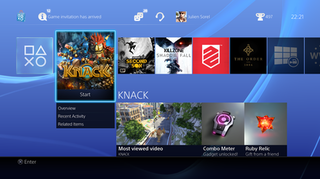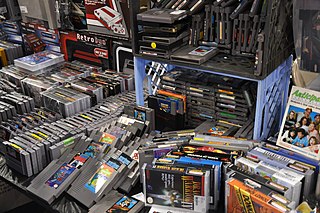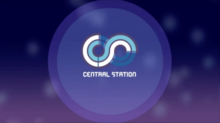
The PlayStation 3 (PS3) is a home video game console developed by Sony Computer Entertainment. The successor to the PlayStation 2, it is part of the PlayStation brand of consoles. It was first released on November 11, 2006, in Japan, November 17, 2006, in North America, and March 23, 2007, in Europe and Australia. The PlayStation 3 competed primarily against Microsoft's Xbox 360 and Nintendo's Wii as part of the seventh generation of video game consoles.

The Net Yaroze is a development kit for the PlayStation video game console. It was a promotion by Sony Computer Entertainment to computer programming hobbyists which launched in June 1996 in Japan and in 1997 in other countries. It was originally called "Net Yarouze", but was changed to "Net Yaroze" in late 1996. Yarōze means "Let's do it together".

The PlayStation Portable (PSP) is a handheld game console developed and marketed by Sony Computer Entertainment. It was first released in Japan on December 12, 2004, in North America on March 24, 2005, and in PAL regions on September 1, 2005, and is the first handheld installment in the PlayStation line of consoles. As a seventh generation console, the PSP competed with the Nintendo DS.
Homebrew, when applied to video games, refers to games produced by hobbyists for proprietary video game consoles which are not intended to be user-programmable. The official documentation is often only available to licensed developers, and these systems may use storage formats that make distribution difficult, such as ROM cartridges or encrypted CD-ROMs. Many consoles have hardware restrictions to prevent unauthorized development. A non-professional developer for a system intended to be user-programmable, like the Commodore 64, is simply called a hobbyist.
PlayStation Network (PSN) is a digital media entertainment service provided by Sony Interactive Entertainment. Launched in November 2006, PSN was originally conceived for the PlayStation video game consoles, but soon extended to encompass smartphones, tablets, Blu-ray players and high-definition televisions. This service is the account for PlayStation consoles, accounts can store games and other content.

The PlayStation Store is a digital media store available to users of Sony's PlayStation 3, PlayStation Vita, PlayStation 4 and PlayStation 5 game consoles via the PlayStation Network.

The PlayStation 3 system software, is the updatable firmware and operating system of the PlayStation 3. The base operating system used by Sony for the PlayStation 3 is a fork of both FreeBSD and NetBSD known internally as CellOS or GameOS. It uses XrossMediaBar as its graphical shell.
The PlayStation Portable system software is the official firmware for the PlayStation Portable. It uses the XrossMediaBar (XMB) as its user interface, similar to the PlayStation 3 console. Updates add new functionality as well as security patches to prevent unsigned code from being executed on the system. Updates can be obtained in four ways:
PlayStation is a video game brand that consists of five home video game consoles, two handhelds, a media center, and a smartphone, as well as an online service and multiple magazines. The brand is produced by Sony Interactive Entertainment, a division of Sony; the first PlayStation console was released in Japan in December 1994, and worldwide the following year.

The PlayStation 2 (PS2) is a home video game console developed and marketed by Sony Computer Entertainment. It was first released in Japan on 4 March 2000, in North America on 26 October 2000, in Europe on 24 November 2000, and in Australia on 30 November 2000. It is the successor to the original PlayStation, as well as the second installment in the PlayStation brand of consoles. As a sixth-generation console, it competed with Sega's Dreamcast, Nintendo's GameCube, and Microsoft's Xbox.

A video game console emulator is a type of emulator that allows a computing device to emulate a video game console's hardware and play its games on the emulating platform. More often than not, emulators carry additional features that surpass the limitations of the original hardware, such as broader controller compatibility, timescale control, greater performance, clearer quality, easier access to memory modifications, one-click cheat codes, and unlocking of gameplay features. Emulators are also a useful tool in the development process of homebrew demos and the creation of new games for older, discontinued, or rare consoles.

The PSX is a Sony digital video recorder with a fully integrated PlayStation 2 home video game console. It was released in Japan on December 13, 2003. Since it was designed to be a general-purpose consumer video device, it was marketed by the main Sony Corporation instead of Sony Computer Entertainment and does not carry the usual PlayStation branding. Initial sales were strong, with the console selling 100,000 units during its first week, thus selling out. Its high cost however resulted in poor sales later on, prompting Sony to cancel plans to release the PSX outside Japan. After the price had been lowered in September 2004, sales increased again.
The eighth generation of video game consoles began in 2012, and consists of four home video game consoles: the Wii U released in 2012, the PlayStation 4 family in 2013, the Xbox One family in 2013, and the Nintendo Switch family in 2017.
Online console gaming involves connecting a console to a network over the Internet for services. Through this connection, it provides users the ability to play games with other users online, in addition to other online services.
The PlayStation Vita system software is the official firmware and operating system for the PlayStation Vita and PlayStation TV video game consoles. It uses the LiveArea as its graphical shell. The PlayStation Vita system software has one optional add-on component, the PlayStation Mobile Runtime Package. The system is built on a Unix-base which is derived from FreeBSD and NetBSD.

The PlayStation 4 (PS4) is a home video game console developed by Sony Computer Entertainment. Announced as the successor to the PlayStation 3 in February 2013, it was launched on November 15, 2013, in North America, November 29, 2013 in Europe, South America and Australia, and on February 22, 2014 in Japan. A console of the eighth generation, it competes with Microsoft's Xbox One and Nintendo's Wii U and Switch.

The PlayStation 4 system software is the updatable firmware and operating system of the PlayStation 4. The operating system is Orbis OS, based on FreeBSD 9.
Game development kits (GDK) are specialized hardware and software used to create commercial video games for game consoles. They may be partnered with game development tools, special game engine licenses, and other middleware to aid video game development. GDKs are typically not available to the public, and require game developers to enter an agreement, partnership, or program with the hardware manufacturer to gain access to the hardware. As console generations pass, development kits often get sold through websites like eBay without repercussions. This is often because the console manufacturers discontinue certain development programs as time passes.

In video games with online gaming functionality, also called cross-compatible play, cross-platform play, crossplay, or cross-play describes the ability of players using different video game hardware to play with each other simultaneously. It is commonly applied to the ability for players using a game on a specific video game console to play alongside a player on a different hardware platform such as another console or a computer. A related concept is cross-save, where the player's progress in a game is stored in separate servers, and can be continued in the game but on a different hardware platform.

Video game preservation is a form of preservation applied to the video game industry that includes, but is not limited to, digital preservation. Such preservation efforts include archiving development source code and art assets, digital copies of video games, emulation of video game hardware, maintenance and preservation of specialized video game hardware such as arcade games and video game consoles, and digitization of print video game magazines and books prior to the Digital Revolution.















